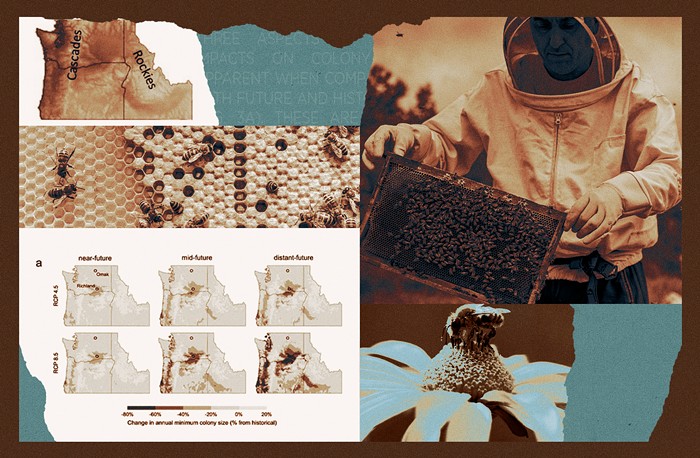
Science Doesn’t Support Wiping Out Wolves to Protect Cows:The Washington Department of Fish & Wildlife’s decision to exterminate an entire wolfpack to protect Kettle Falls-area rancher Len McIrvin’s cattle has drawn heated criticism, particularly after footage from Washington State University’s Large Carnivore Conservation Lab showed McIrvin had elected to graze his herd directly on top of the Profanity Peak pack’s den site. Because research shows that populations with direct experience with predators tend to view them more negatively—which means residents of rural eastern Washington who have property abutting wolf habitat are more likely to oppose wolf conservation than urban Puget Sound dwellers, for whom the animals are mostly an abstraction—it’s tough to decide how to weigh widely-varying opinions in determining predator control policy. Do we prioritize the beliefs of those who make their living from public land, or treat public land as equally shared among citizens, regardless of their proximity and economic relationship to it? While we’re unlikely to come to a consensus on that loaded question anytime soon, a recent study in the journal Frontiers in Ecology and the Environment nonetheless casts doubt on WDFW’s decision for the simple reason that there's little scientific evidence that killing predators actually accomplishes the goal of protecting livestock. In the study, the authors systematically evaluated various lethal and non-lethal methods of predator control, randomly assigning various test cases to control and treatment groups with experimental designs that avoid bias. Their damning conclusion? Non-lethal methods were more effective than lethal methods across the broad—and in at least two cases, lethal methods resulted in an increase in livestock loss.
Poverty, Corruption, and lack of Urbanization Drives Increase In Human Footprint on Earth: A more optimistic reading of the Profanity Peak saga is that overall levels of human/wildlife conflict are increasingly reduced as the Pacific Northwest urbanizes: as I’ve written previously, the region is arguably wilder than it has been since the early 20th century, and the speed at which wolves have recolonized Washington suggests that McIrvin and others are (for now) fighting a doomed battle. An article in this month’s Nature Communications largely supports that conclusion, attributing 16 years of change in the “human footprint” on earth’s terrestrial ecosystems to a variety of societal factors including poverty, corruption, and yes, urbanization. The good news from the article is that while the human population has increased by 23% and the world economy has grown 153%, the human footprint has increased by just 9%, something largely driven by the reduced ecological impact of continued economic growth in wealthy, predominantly urban nations with strong controls on corruption. The less-good news is that these reductions are offset by the increasing footprint of developing nations, which hold a disproportionate share of the Earth’s biodiversity.
So Is “Second Earth” Proxima b Habitable, Or Not? Reporting on the discovery of Proxima b, an Earth-sized planet orbiting to nearest star to our sun, Charles wrote that “believe me, we will not change our planet like we change our cars.” That’s particularly poignant in light of a recent essay by UW Department of Astronomy’s Rory Barnes. Barnes emphasizes the limits of our current knowledge, and outlines what it would take to determine whether the planet might be a future home for our species: “[Is] Proxima b habitable? Is it inhabited? These questions are impossible to answer at this time because we know so little about the planet.”
Science Event of the Week: Commonly known as the Corpse Flower (or “titan arum”), Amorphophallus titanum is native to the rainforests of Sumatra, Indonesia, and Malaysian Borneo. As you might guess, the flower gets its ominous name from its odor, which is reminiscent of the smell of a decaying body. Though Corpse Flowers can sometimes go as long as 10 years between blooms, there’s one at Volunteer Park in Capitol Hill that’s currently doing so, providing a rare opportunity for Seattlites to catch a whiff of floral death. It’s not expected to last more than three days, so act fast.














